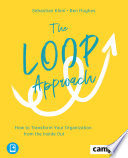

The core principle of The Loop Approach is the concept of iterative feedback loops. This idea emphasizes the importance of continuous feedback in the product development cycle. By creating a system where feedback is regularly solicited from users, teams can make informed decisions that lead to better product outcomes. This iterative process allows for rapid prototyping and testing, enabling teams to pivot or refine their ideas based on real user experiences. The approach advocates for smaller, more frequent releases that can be adjusted based on feedback, rather than waiting for a 'perfect' product. This not only helps in minimizing waste but also fosters a culture of learning and adaptability within teams.
Continue readingUser-centric design is another pivotal concept presented in The Loop Approach. This idea stresses the importance of placing the user at the center of the design process. By understanding user needs, pain points, and behaviors, product teams can create solutions that truly resonate with their audience. The book outlines various methods for gathering user insights, including interviews, surveys, and usability testing. It also discusses the significance of empathy in design, encouraging teams to step into the users' shoes to better understand their experiences. A user-centric approach not only enhances product usability but also increases customer satisfaction and loyalty.
Continue readingThe Loop Approach underscores the necessity of cross-functional collaboration in product development. It posits that diverse teams, comprising members from different departments such as marketing, design, engineering, and customer support, can lead to more innovative solutions. The book suggests strategies for fostering collaboration, such as regular brainstorming sessions and shared goals. By breaking down silos and encouraging open communication, teams can leverage the unique perspectives and expertise of each member, leading to more holistic and effective product outcomes. This collaborative environment also promotes a sense of ownership among team members, which can enhance motivation and engagement.
Continue readingIn The Loop Approach, data-driven decision making is highlighted as a vital component of successful product development. The book explains how data can provide valuable insights into user behavior and preferences, enabling teams to make informed choices. It discusses various tools and methodologies for collecting and analyzing data, such as A/B testing, analytics platforms, and user feedback systems. By relying on data rather than intuition or assumptions, teams can reduce the risk of failure and increase the likelihood of creating products that meet market demands. The emphasis on data also encourages a culture of accountability, where decisions are backed by evidence.
Continue readingThe concept of rapid prototyping is another key idea in The Loop Approach. The book advocates for creating quick and inexpensive prototypes to test ideas before full-scale development. This practice allows teams to explore multiple concepts and gather user feedback early in the process, significantly reducing the time and resources spent on developing a product that may not meet user needs. The book details various prototyping techniques, including wireframing, mockups, and MVP (Minimum Viable Product) development. By embracing rapid prototyping, teams can iterate more effectively and ensure that their final product is well-aligned with user expectations.
Continue readingThe Loop Approach encourages teams to embrace failure as a natural part of the innovation process. The book argues that viewing failure as a learning opportunity can foster a growth mindset within teams. Instead of fearing failure, teams are encouraged to analyze their mistakes, extract valuable lessons, and apply those insights to future projects. This approach helps to create a safe environment where team members feel empowered to take risks and experiment with new ideas. By normalizing failure, organizations can cultivate a culture of innovation that drives continuous improvement and creativity.
Continue readingLastly, The Loop Approach discusses the importance of balancing a long-term vision with short-term goals. While having a clear vision is crucial for guiding product development, the book emphasizes the need to set achievable short-term objectives that align with that vision. This dual focus allows teams to maintain momentum and make incremental progress while keeping the overarching goals in sight. The book provides frameworks for setting and tracking goals, ensuring that teams remain agile and responsive to changing market conditions. This balance between vision and goals is essential for sustaining growth and innovation over time.
Continue reading